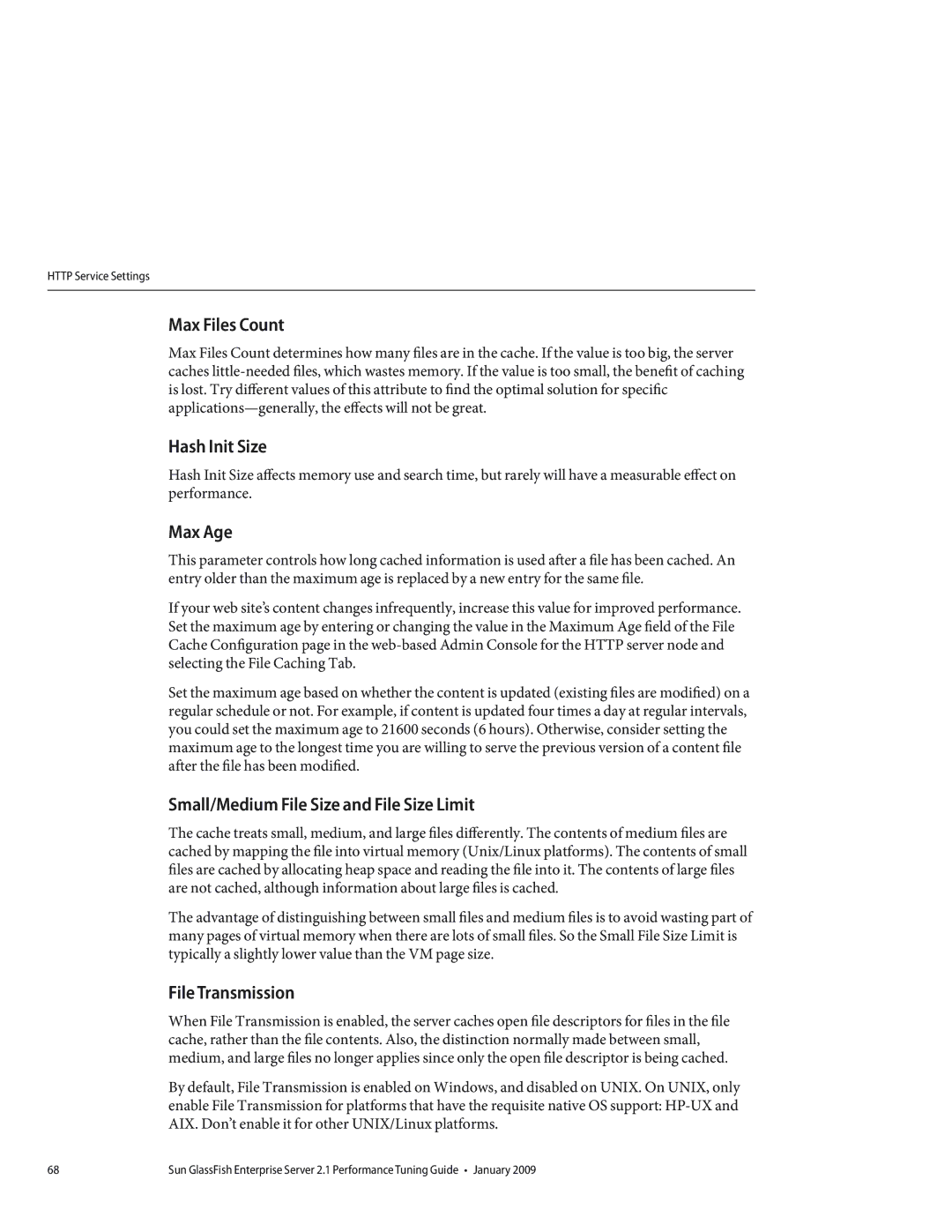HTTP Service Settings
Max Files Count
Max Files Count determines how many files are in the cache. If the value is too big, the server caches
Hash Init Size
Hash Init Size affects memory use and search time, but rarely will have a measurable effect on performance.
Max Age
This parameter controls how long cached information is used after a file has been cached. An entry older than the maximum age is replaced by a new entry for the same file.
If your web site’s content changes infrequently, increase this value for improved performance. Set the maximum age by entering or changing the value in the Maximum Age field of the File Cache Configuration page in the
Set the maximum age based on whether the content is updated (existing files are modified) on a regular schedule or not. For example, if content is updated four times a day at regular intervals, you could set the maximum age to 21600 seconds (6 hours). Otherwise, consider setting the maximum age to the longest time you are willing to serve the previous version of a content file after the file has been modified.
Small/Medium File Size and File Size Limit
The cache treats small, medium, and large files differently. The contents of medium files are cached by mapping the file into virtual memory (Unix/Linux platforms). The contents of small files are cached by allocating heap space and reading the file into it. The contents of large files are not cached, although information about large files is cached.
The advantage of distinguishing between small files and medium files is to avoid wasting part of many pages of virtual memory when there are lots of small files. So the Small File Size Limit is typically a slightly lower value than the VM page size.
File Transmission
When File Transmission is enabled, the server caches open file descriptors for files in the file cache, rather than the file contents. Also, the distinction normally made between small, medium, and large files no longer applies since only the open file descriptor is being cached.
By default, File Transmission is enabled on Windows, and disabled on UNIX. On UNIX, only enable File Transmission for platforms that have the requisite native OS support:
68 | Sun GlassFish Enterprise Server 2.1 Performance Tuning Guide • January 2009 |
